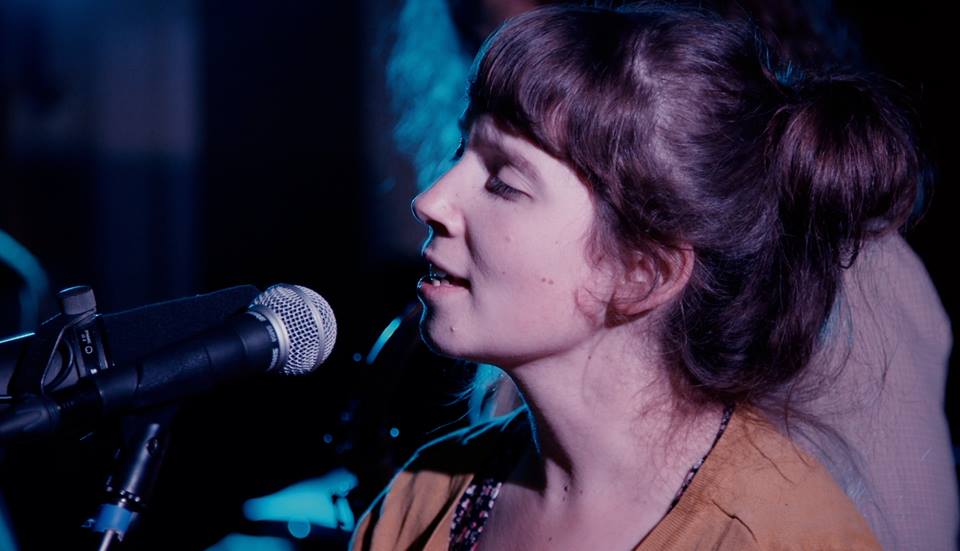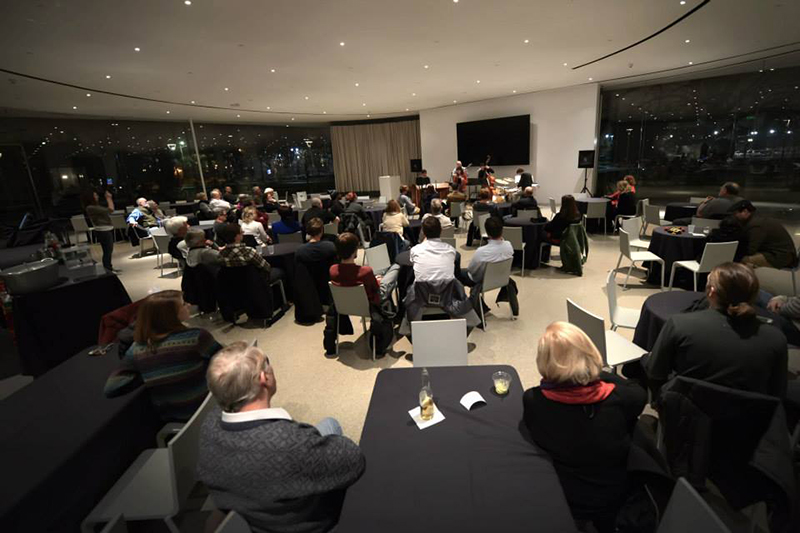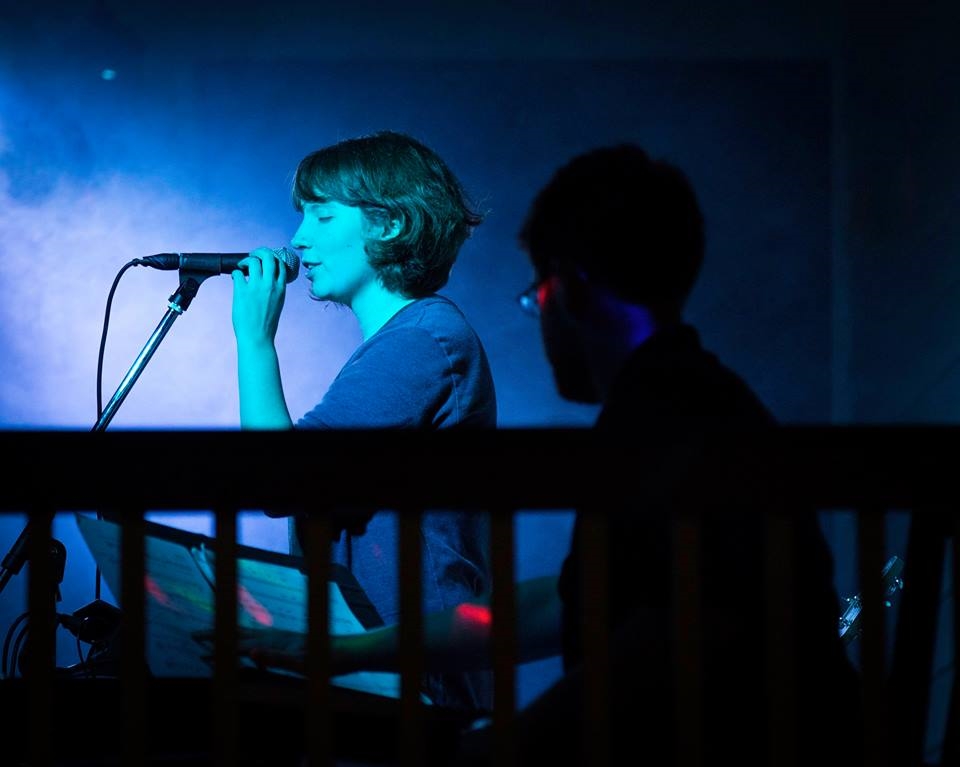A lyrical journey
Alumna Estar Cohen finds her musical voice in improvisational jazz
by Laurie B. Davis
Alumna Estar Cohen believes she has found her true voice.

Today, Cohen is a lyricist, vocalist, composer and educator, who recently received a 2018 Herb Alpert Young Jazz Composer Award from the American Society of Composers, Authors and Publishers. Her award-winning jazz composition, titled “Endings,” is a beginning of sorts. “For me that piece was a really great breakthrough moment of finding a balance between what I love about folk music, storytelling, improvisation and modern jazz. To me, those passions finally came together in one cohesive piece,” she says.
Don’t box me in
Improvisation is the heart and soul of jazz, and it’s an important part of performance for the musicians who support the vocalist. As the composer, Cohen says she leaves room for the musicians to express their individuality. “That’s what jazz is all about, finding your voice and being creative, not worrying about fitting into a specific mold or a specific box. That’s what it is for me.”
Two of Cohen’s University of Toledo professors, Tad Weed, her mentor and associate professor of jazz studies, and Jay Weik, associate lecturer of jazz studies, continue to encourage Cohen on her journey. “They were really big proponents of finding your voice. ‘Don’t shy away from that. Don’t be afraid to put your energy into finding who you are within the music, rather than trying to write what you think is going to catch on or that people might like.’”
Cohen was Weed’s student in composition and jazz improvisation theory, and she was a vocal ensemble member for four years. Weed says Cohen wanted to be a complete musician. “By this, I mean she started as a vocalist and lyric writer, but she was interested in learning piano, compositional theory and jazz improvisation, besides ensemble arranging,” he says. “She is a special talent who comes along very rarely as far as students go. As an experienced performer and teacher of over 45 years, I realize that is not the most important ingredient. She also possessed a rare work ethic that made her excel quickly.”Weed, who has performed with Cohen many times, says she has a very creative attitude toward their art form. “She writes extremely thoughtful lyrics, poetry, and she has a very unique ability to improvise lyrics besides melodic and harmonic movement. Many music students may become musicians but find it very difficult to become artists,” says Weed. Cohen’s artistic merit is at the top of the charts, he says.
Would Herbie have dug it?
Cohen, always ready for her next challenge, took on a project Weed gave her while she was in her junior year at UT. She would write lyrics for some instrumental music by jazz composer Herbie Nichols. UT’s own jazz legend, the late Jon Hendricks, was a master of this practice, known as vocalese.“Tad [Weed] just handed me a folder of all of these charts and said, ‘Here, you should take a look at these and see if you can put words to them.’ I hadn’t really known much about Herbie Nichols up until that point. The tricky thing about most of those compositions is that they had never been recorded by Herbie. I couldn’t necessarily go back and just listen to his recordings.”
She relied on the sheet music and Weed’s interpretation on piano. “It’s very difficult when you’re writing for someone who is no longer with you. I don’t know what he would’ve thought. Maybe he would’ve dug it, maybe he would’ve said, ‘No, not really what the song’s about.’” She let go of how Nichols might critique her work and researched his life, hoping some ideas would click. Weed loved what she had done with the lyrics, so the two performed Nichols’ music with Weed’s Freedom Ensemble band.
The Creative Process
There are many ways to approach composing, says Cohen, and music and lyrics are born out of myriad sources that nourish her creativity. “I get a lot of inspiration from reading, reading and writing poetry, watching films, deep listening of music, and I do a lot of comedy. If I’m feeding those parts of my personality, I’m in a lot better space to have ideas or let the music come to me,” she says.Music comes to Cohen through various methods. “Sometimes I’ll write a lyric first, but much more often it comes with the harmony, and when I’m talking about harmony, specifically it means the chord changes to a piece of music,” she says. “I might start at the piano and begin playing and finding the harmony that I enjoy, then I’ll begin to write a melody around that and then write the lyrics. And the music and the lyrics kind of feed off each other.”
If the piano keys do not trigger her writing, Cohen will seek out a space of solitude and stillness. “Silence is a really important part of my process. If I can go out into a park, wonderful. It may be just creating a really quiet space in my apartment, where I can try to hear the details of the composition in my head, and then go back and fill it out in sheet music.”
Cohen composes specific parts for each musician, but improvisation is always built in. “Because it’s based off of the jazz tradition, I write for specific voices. I put a lot of trust in them [the musicians] to bring their own voice to it,” says Cohen.
The Projects and a Podcast
When she’s not teaching, the Ypsilanti, Mich., resident juggles multiple music projects focused on composition and performance. “They’re all a form of expression, but the music is very different,” she says. The Estar Cohen Project is a more personal outlet in which the players, who sometimes change, perform only Cohen’s compositions. “It’s a vehicle for lyrics, for sure,” says Cohen. “I’m able to express my poetry that way. I think the music just kind of breathes in a different fashion.” She adds that changes in personnel also change the sound.
Occasionally, Cohen performs with vocalist and bassist Maggie Hasspacher. “When I’m working with Maggie, it’s very stripped down, bass and two voices. Sometimes I’ll play a string instrument. Maggie is an amazing new music player and also an aficionado of folk music, so we’ll do traditional and put our own spin on it. And we’ll do her new music compositions, so that’s probably the most different out of all of my projects.”
A group of musicians – all fellow UT music students, with the exception of the bassist – perform with Cohen under the name Talking Ear. This modern jazz quintet plays throughout the Midwest and other areas across the country. Talking Ear members are Daniel Palmer, guitar; Benjamin Maloney, piano; Aidan Cafferty, bass; Travis Aukerman, drums; and Cohen on vocals. “We very rarely have lyrics, so the music is instrumental, and I use my voice as an instrumental force rather than a mode of delivery for story. That group came out of The University of Toledo as a way for us to work on composition,” Cohen says.Talking Ear also is recording the new monthly podcast, “On Creating,” which addresses that very subject. It’s a collaboration, too, with other creative artists from among the band members’ network of friends and acquaintances participating in the dialogue.
Next Directions
Cohen is currently looking to record another album, a follow-up to Waiting for Dawn, Live at Willis Sound and Talking Ear. She also wants to experiment with additional instrumentation, utilize more voices, such as vocal choirs, work some spoken-word poetry into her music and try working with different types of ensembles. “A couple of years ago I had debuted a string quartet project at the Toledo Museum of Art with my jazz quintet, and I would like to expand upon that. Eventually, I’d like to write for large groups, like orchestra. That’s a long-term goal.”For now, Cohen can look forward to August when she and fellow musicians of the Estar Cohen Project will perform at the Newport Jazz Festival as part of the ASCAP Herb Alpert Young Jazz Composer Award. Only one, out of 15 award recipients, is chosen for this opportunity.
“To be honest, when I got the phone call, I was completely taken aback. I was pretty breathless. You get in a space where you submit to these things all the time, and you just let it go. You don’t want to get your expectations in a certain place and continuously be disappointed by a rejection because that’s just the way it goes.”
In addition to a monetary award and a place on the stage at the Newport Jazz Festival for having written her winning composition, the 25-year-old Cohen knew she had found her authentic self in the music. “I was happy that “Endings” was chosen for the award because it’s a moment where I felt like this is my true voice coming through.”











